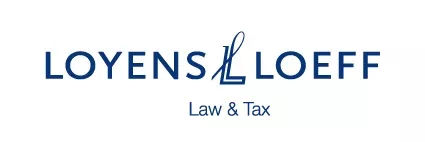- within Privacy, Environment and Antitrust/Competition Law topic(s)
On 4 December 2024, the Dutch State Secretary of Finance published a decree (the Amount B Decree) that outlines the Dutch implementation of Amount B of Pillar One. The Amount B Decree states that Amount B will be accepted by the Dutch tax authorities for Dutch taxpayers that are involved in intercompany transactions covering wholesale distribution activities in 'Covered Jurisdictions' that meet the relevant criteria. Amount B will not apply to wholesale distribution activities in the Netherlands. It will be effective as of 1 January 2025.
Background
Amount B of Pillar One is an optional simplified and streamlined approach (S&S Approach) for the application of an approximation of the arm's length principle to baseline marketing and distribution activities (BMDA). Amount B provides a pricing framework which includes a 3-step process to determine a return on sales (RoS) for in-scope wholesale distribution of goods. Jurisdictions can choose to apply Amount B for fiscal years beginning on or after 1 January 2025. There is no minimum revenue threshold for the application of Amount B.
The S&S Approach, as included in the Pillar One Amount B Report of February 2024 (Report), is incorporated as annex to Chapter IV of the OECD Transfer Pricing Guidelines and aims to reduce the compliance burden and to efficiently resolve disputes in respect of BMDA. Following the guidance that was published by the OECD Inclusive Framework (IF) on 17 June 2024 (June Guidance), members of the IF commit to respect remuneration outcomes under the S&S Approach when applied by any of the Covered Jurisdictions.
We refer to our previous website posts for more background on the Report and June Guidance.
Amount B Decree
With the issuance of the Amount B Decree, the Dutch State Secretary of Finance outlines the Dutch implementation of the S&S Approach as formulated in the June Guidance.
Pursuant to the Amount B Decree, the S&S Approach will not be introduced for BMDA performed in the Netherlands. However, the outcome of the S&S Approach will under conditions be accepted for Dutch taxpayers that are involved in intercompany transactions covering BMDA that are performed in 'Covered Jurisdictions'. The provisions in the Amount B Decree apply both to intercompany transactions and profit allocations to permanent establishments.
The Dutch Tax Authorities will accept the outcome under the S&S Approach for the fiscal year in question if the following criteria are satisfied in that same year:
- The BMDA must be performed in a Covered Jurisdiction;
- The S&S Approach must be implemented in the domestic legislation of the Covered Jurisdiction;
- A bilateral tax treaty between the Covered Jurisdiction and the Netherlands must be applicable; and
- The Covered Jurisdiction must apply the S&S Approach in accordance with the Report.
What can taxpayers do?
Taxpayers can, taking into account the Report, June Guidance and the Amount B Decree, assess whether (i) their wholesale distribution activities are in scope for the application of Amount B, and (ii) their remunerations align with the returns from the pricing matrix, considering any applicable profitability adjustments. In case of alignment, we recommend including this in your transfer pricing documentation to mitigate the risk of challenges. If there would be differences with Amount B, we recommend further assessing and, if possible, substantiating these differences in your transfer pricing documentation.
The content of this article is intended to provide a general guide to the subject matter. Specialist advice should be sought about your specific circumstances.





